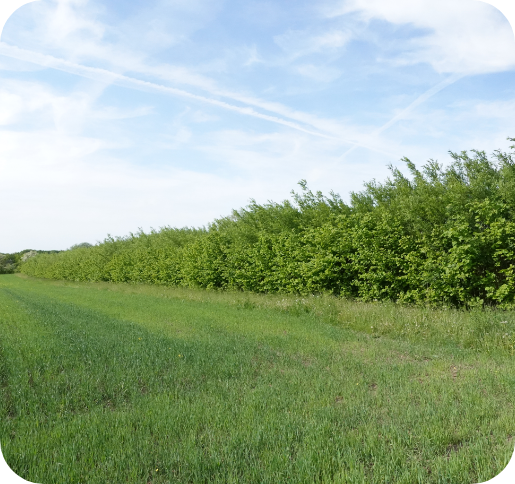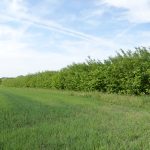
Contact person:
Bhim Bahadur Ghaley
Associate Professor, PhD

Vaibhav Pradeep Chaudhary
PostDoc

Living Lab 6: Denmark
Managed by: University Of Copenhagen, Taastrup Campus, Denmark
General information
The experimental production system is a combined food and energy (CFE) system, integrating food and fodder crops with biomass belts constituting mixed stands of willow, alder and hazelnut. It was established in the spring of 1995 at the experimental farm in Taastrup (55◦400 N, 12◦180 E) under University of Copenhagen, Denmark. Prior to 1995, the site was continuously cropped with annual crops.
General farming approach
Organic farm.
Objectives
Carbon neutral farm to produce food, fodder and energy
Challenges
- Maintenance of soil fertility
- Yield stability
- Lack of funds to carry out measurements and monitor the living lab.
Research goals
Aim: Carbon neutral farming
Design of the agroforestry system
The combined food and energy (CFE) is an organic production system, without the use of any fertilizers, herbicides, or pesticides. In CFE, the food components consisted of winter wheat, barley (Hordeum vulgare), oat (Avena sativa) and fodder component consisted of
ryegrass (Lolium perenne)/lucerne (Medicago sativa) ley and bio-energy component consisted of 5 double rows of short rotation woody crops (shelterbelts). A combined food and energy (CFE) agro-ecosystem was established in Denmark, as a potential production system to produce food, fodder and energy. CFE is an agroforestry system integrating SRWC into conventional monoculture to produce food, fodder and energy.
Monitoring
What will be monitored and how:

Denmark

11.1 8 ha pasture (10.1 is arable food and 1.0 biofuel)

Silvoarable

Research and educational type (alley cropping)

Established in May 1995

Inter-row/In-row distance: 1.3/ 0.5 m

Width of tree strips: 11 m

Number of trees: 20000 trees ha (Fodder : Food : Tree biomass – 45:45:10 ratio)

Alder (Alnus rubra), Willow clones [ (one double row each) of (Salix viminalis (L.) “Jor”, Salix dasycladus Wimmer and Salix triandra × cinerea (L.) ] and Common hazel (Corylus spp.)

Livestock: No








